| ID: MIS_1994 / Kathleen Haines Editor
| Title | Mistral - Journal of the Mersea Island Society. 1994. |
| Abstract | Mistral 1994 partial index:
- West Mersea Auxiliary Coastguard by Franki Merry.
- Friends of Mersea Island by Betty Winch.
- Paddington Bear by K.M.H.
- Vanderdecken by Rodney Hill. The yacht, built 1909 as a gaff rigged ketch, and the story of her recent loss.
- The Mulberry Harbour by Patrick Gough. The designer was Iorys Hughes, a Mersea resident. Pages 15 to 17. Interesting background on Iorys and his Mersea connection.
- Viking Sheep on Ray Island by David Nicholls
- Charlie French - an obituary by Mary Jardine, his sister. Charlie died April 1993 at the age of 84.
- Rev. John Swallow retires - by Tom Millatt and Rev. David Greaves.
- Sandy Morris retires - by Gwilym D. Williams.
- Mersea School - as pupil and teacher - by Freda Smith.
- Tale of the Native - the book Essex Gold reviewed by Andrew Phillips.
- East Mersea Church and Village Fete, by Heather Corbett.
Museum copy Accession No. 2011-09-007J.
All pages scanned from a borrowed copy. |
| Author | Kathleen Haines Editor |
| Published | 1994
|
| Source | Mersea Museum / Ron Green
|
| ID | MIS_1994
|
| Related Images: |
|
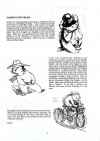 |
| ImageID: | MIS_1994_028 | | Title: | Mistral. Journal of the Mersea Island Society. January 1994. Page 4.
Paddington Bear, by the Editor, about Peggy Fortnum (Mrs Peggy Nuttall-Smith) who did the drawings of Paddington. | | Date: | January 1994 | | Source: | Mersea Museum |
|
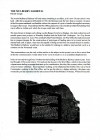 |
| ImageID: | MIS_1994_045 | | Title: | Mistral. Journal of the Mersea Island Society. January 1994. Page 15.
The Mulberry Harbour, by Patrick Gough.
The words Mulberry Harbour will only mean something to us oldies, as it is now 50 years since it was built. After the evacuation of Dunkirk in 1940, the Germans took the view that no counter-invasion of the European mainland was feasible without the capture of a port to handle the supplies necessary to support the troops. Churchill and his War Office planned to overcome this problem by building what was in effect a mobile port which the troops could take with them.
The man chosen to design such a thing was the Bangor born Iorys Hughes, who had worked on such notable peace-time projects as Wembley Stadium and the Hyde Park Underpass. In a Top Secret memorandum dated 1st June 1942 on behalf of the Prime Minister, the War Office formally instructed him to prepare designs for the construction of prototypes of landing piers to be towed across the channel and sunk in place; they must be capable of being towed from one assault beach to another. The Mulberry Harbour would have to be suitable for sinking in a shallow sand sea-bed, such as is common on the Normandy coast.
This memorandum was the only written article on the subject as the project was to be so secret that all further communication would either be by word of mouth or on a scrambled telephone line.
In fact it was only through Iorys' brother that the building of the Mulberry Harbour came to pass. Iorys had thought of this some time in 1941 and sent his idea up to the War Office, which in those days had a department dealing in strange ideas sent up for consideration; this idea, like so many others, was filed away for future reference. Iorys had heard nothing, so he telephoned his brother who was a Naval Commander working in the War office, and he put the idea to a higher authority; the plans were eventually put into operation on the instructions of the Prime Minister of the day, Winston Churchill.
The photo is of the Mulberry Harbour Memorial at Conway or Conwy marina. The text is initially in Welsh, then English:
This stone commemorates one of the best kept secrets of World War II. It was on this site that concrete sections of the Mulberry Harbour, a complex floating harbour installation, which was used for the Normandy D Day operations on June 6th, 1944 were constructed and launched into the River Conwy. The original prototype unts were designed by H.Iorys Hughes. Esq. M.Eng F.Inst C.E. F.Inst. St. E. of Bangor, Caernarfonshire.
Part 2
| | Date: | January 1994 | | Source: | Mersea Museum |
|
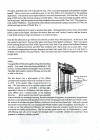 |
| ImageID: | MIS_1994_046 | | Title: | Mistral. Journal of the Mersea Island Society. January 1994. Page 46.
The Mulberry Harbour contd.
The plans, dated between 17th June and 6th Aug., 1942, were those prepared and retained by Hughes himself. One or more sets would have gone to the War Office to be developed by the planning department. The massive and complex harbours were built between early 1943 and May 1944, by a gang of 900 men on the Conway estuary in North Wales. They were successfully launched with the use of tug boats, and the operation was fully justified by the events of 6th. June 1944. The enterprise, code-named "Mulberry," was described on the official commemorative plaque erected in e 1978 as one of the best kept secrets of World War 11.
People have asked me how I came to possess these plans. Although I did not know lorys, he had died before I came to the Island, I did know his widow Jane very well. In fact, I used to visit her home in Coast Road and have long conversation on a variety of topics.
One day she asked me to go with her into the attic as there were "bits and pieces", as she put it, that she wanted to get rid of. Among other plans were those of the Mulberry Harbour. There were plans of the docking of the Cutty Sark, which I gave to the Cutty Sark Trust; plans of the Mulberry Harbour I put into a cupboard at home, and there they remained until I had a clear-out six years later. They were detailed engineering drawings, diagrams and plans that meant little to me, so I took them to Sotheby's to see if there was any interest. They were duly sold, and I would be intrigued to know who bought them.
Editor;
I was grateful to Patrick Gough for doing this interesting article. As a result of its also being published in The Courier, we learned that Iorys Hughes' niece, Rosalind Fairchild, had recently retired to Mersea and was able to add to the story.
She has shown me a photograph of the official commemorative plaque which was unveiled at Conway in 1978. In his speech, Major General Stewart Cox said; "We have been proud to see here today a small military parade which is inevitably a stirring sight, especially I believe to Welshmen who have shown a close affinity and a strong loyalty to the Fighting
Services .... But it seems to me, that if it were possible,
what we should also be seeing is a strong, formed contingent of engineers, ex-quarrymen, draughtsmen, labourers, and craftsmen and specialists of every kind, marching proudly with the tools of their trades, for without all of them the great Mulberry Harbours would not have been built. And such a parade should have been led by that very distinguished Welsh architect and civil engineer, Iorys Hughes. It is clear to me that without his brilliance, the visionary ideas and concepts would never have been converted into reality and hardware. But like so many great men he was, as I understand it, a quiet, self-effacing man who never sought the limelight and it is doubtful whether he would have been prepared to head my visionary parade".
Part 1
| | Date: | January 1994 | | Source: | Mersea Museum |
|
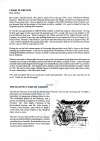 |
| ImageID: | MIS_1994_050 | | Title: | Mistral. Journal of the Mersea Island Society. January 1994. Page 20.
Charlie French, by Mary Jardine. Charlie died April 1993, aged 84. Dovers Cottage, St. Peters Road.
The Ralph Luckham Garden at Mersea Museum. Unveilled by granddaughter Annabel. | | Date: | January 1994 | | Source: | Mersea Museum |
|
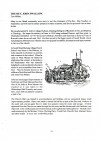 |
| ImageID: | MIS_1994_051 | | Title: | Mistral. Journal of the Mersea Island Society. January 1994. Page 21.
The Rev. John Swallow. Appreciation by Tom Millatt. John retired September 1993. | | Date: | January 1994 | | Source: | Mersea Museum |
|
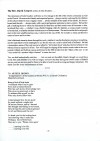 |
| ImageID: | MIS_1994_052 | | Title: | Mistral. Journal of the Mersea Island Society. January 1994. Page 22.
The Rev. David Greaves writes of John Swallow ...
To Arthur Brown - in appreciation of his lectures at Mersea WEA on Greek Civilisation. Marjorie Livermore. | | Date: | January 1994 | | Source: | Mersea Museum |
|
![Mistral. Journal of the Mersea Island Society. January 1994. Page 25
Mersea School, by Freda Smith.
</p>
<p>It has been suggested that I jot down some memories of my years at Mersea School, both as a pupil and a teacher. They are random thoughts and I am sure others could write recalling much more than I.
</p>
<p>So, in 1932 I entered Miss Wooldridge's class as an infant. Boys and girls entered the premises by separate entrances. The payground behind the main block and house was divided by a high fence with a door in the middle. I remember on one very snowy day, the door was opened and there was a grand snowball fight.
</p>
<p>The school was an all-age one then, and boys did woodwork and the girls did cookery, in a large corrugated building which jutted out into the playground. Lunch was eaten there at one time and there was a lovely smell of wood. Later we lunched in the small room at the Legion Hall. The house then was the home of the Head, Mr Toombs, an awe-inspiring figure to me. Behind the old Senior Block (the smaller building opposite the entrance to the school garden) were a few very tidy gardens, which certain of us tended. The hall (now the Youth Club premises) had cases of stuffed birds attached to the walls.
</p>
<p>Some of the teachers' names I recall are Mr Rolls, Mr Barrell, Miss Pascoe and Mr Wilkinson who taught Rural Science - the gardens used for this subject were at the top of the field behind the school garden. I still have m mug which commemorated the Silver Jubilee of King George V and Queen Mary. They were handed out to every child from a table set up in the garden, by the flag pole. Later, we all received one for the Coronation of KingGeorge VI and Queen Elizabeth. Horticultural Shows were held in the field. The rectangular flower bed by the left hand bounary of the garden was a pond and I remember beinggiven the task of netting the dead leaes off the surface. Behind it stood an aviary.
</p>
<p>
I left to attend the County High School for Girls, little thinking that one day I would return, to stand in front of the class this time. It was just after the war and I remember wearing my ATS battle blouse and skirt dyed brown, to save clothing coupons! I was filling in time whilst waiting to go to college. Later, after teaching at Wivenhoe, I joined the staff at West Mersea. Mr Cotgrove was the Head, followed by Mr Westcott. Certain changes occurred; the wood-work building war removed, for instance. I can't remember when the seniors were sent to Colchester. The classes were large - 52 being the record for me! Dinners were cooked in the kitchen at the canteen, now demolished. They were good, being freshly cooked on the day. The staff ate with the children, with one poor teacher on duty, trying to keep down the babble! I had a class in there (freezing in winter), when Cook came to tell that it had just been announced that King George VI had died. I can recall the deep sense of loss that was felt. Some teachers I remember from this time are Miss Aldridge, Mrs Chesney, Mrs Johnson, Mrs South, Mrs Farthing, Mr Hucklesby, Mr Davis, Mrs Ruffell and Miss Scott. I am hoping someonewill put names to some other faces that I recall. Our care-taker was Don Woolf.
</p>
<p>
Teaching was really enjoyable, and we were allowed to work without interference - except when we had HMI inspection!. I left when I married, but surprise, surprise, seven years later I was back on the staff again. there had been changed - the woodwork room gone, the swimming pool provided. These names will be recalled by many; - Mrs Shelton, Mrs Kerr, Mrs Neal, Mr Stimpson, Mr Gotsell, Mrs Sellar, Mrs Newomb, Mrs Levett, Mrs Mottershaw, Mrs Gibb and Mrs Coxford. Only two remain from my time, Mrs Hucklesby and Mrs Bermingham.
</p>
<p>
The greatest event in recent years was the building of the new Infant's Block, and the Junior Hall. Howe I would like to see the Junior School re-housed in their own new building. May-be ?
</p>
<p>[ From the School Log Book:
1936 Freda Keene listed in Examination Successes
20 July 1984 Mrs Freda Smith retired after 26 years service. She died November 2015.]
</p>
</p><p>There is an audio recording of Freda talking about her school days. See <a href=mmresdetails.php?col=AV&ba=cke&rt=Audio&rhit=1&pid=LN021301_002 ID=1>LN021301_002 </a>
</p> MIS_1994_057](MMThumbnails23/MIS_1994_057.jpg) |
| ImageID: | MIS_1994_057 | | Title: | Mistral. Journal of the Mersea Island Society. January 1994. Page 25
Mersea School, by Freda Smith.
It has been suggested that I jot down some memories of my years at Mersea School, both as a pupil and a teacher. They are random thoughts and I am sure others could write recalling much more than I.
So, in 1932 I entered Miss Wooldridge's class as an infant. Boys and girls entered the premises by separate entrances. The payground behind the main block and house was divided by a high fence with a door in the middle. I remember on one very snowy day, the door was opened and there was a grand snowball fight.
The school was an all-age one then, and boys did woodwork and the girls did cookery, in a large corrugated building which jutted out into the playground. Lunch was eaten there at one time and there was a lovely smell of wood. Later we lunched in the small room at the Legion Hall. The house then was the home of the Head, Mr Toombs, an awe-inspiring figure to me. Behind the old Senior Block (the smaller building opposite the entrance to the school garden) were a few very tidy gardens, which certain of us tended. The hall (now the Youth Club premises) had cases of stuffed birds attached to the walls.
Some of the teachers' names I recall are Mr Rolls, Mr Barrell, Miss Pascoe and Mr Wilkinson who taught Rural Science - the gardens used for this subject were at the top of the field behind the school garden. I still have m mug which commemorated the Silver Jubilee of King George V and Queen Mary. They were handed out to every child from a table set up in the garden, by the flag pole. Later, we all received one for the Coronation of KingGeorge VI and Queen Elizabeth. Horticultural Shows were held in the field. The rectangular flower bed by the left hand bounary of the garden was a pond and I remember beinggiven the task of netting the dead leaes off the surface. Behind it stood an aviary.
I left to attend the County High School for Girls, little thinking that one day I would return, to stand in front of the class this time. It was just after the war and I remember wearing my ATS battle blouse and skirt dyed brown, to save clothing coupons! I was filling in time whilst waiting to go to college. Later, after teaching at Wivenhoe, I joined the staff at West Mersea. Mr Cotgrove was the Head, followed by Mr Westcott. Certain changes occurred; the wood-work building war removed, for instance. I can't remember when the seniors were sent to Colchester. The classes were large - 52 being the record for me! Dinners were cooked in the kitchen at the canteen, now demolished. They were good, being freshly cooked on the day. The staff ate with the children, with one poor teacher on duty, trying to keep down the babble! I had a class in there (freezing in winter), when Cook came to tell that it had just been announced that King George VI had died. I can recall the deep sense of loss that was felt. Some teachers I remember from this time are Miss Aldridge, Mrs Chesney, Mrs Johnson, Mrs South, Mrs Farthing, Mr Hucklesby, Mr Davis, Mrs Ruffell and Miss Scott. I am hoping someonewill put names to some other faces that I recall. Our care-taker was Don Woolf.
Teaching was really enjoyable, and we were allowed to work without interference - except when we had HMI inspection!. I left when I married, but surprise, surprise, seven years later I was back on the staff again. there had been changed - the woodwork room gone, the swimming pool provided. These names will be recalled by many; - Mrs Shelton, Mrs Kerr, Mrs Neal, Mr Stimpson, Mr Gotsell, Mrs Sellar, Mrs Newomb, Mrs Levett, Mrs Mottershaw, Mrs Gibb and Mrs Coxford. Only two remain from my time, Mrs Hucklesby and Mrs Bermingham.
The greatest event in recent years was the building of the new Infant's Block, and the Junior Hall. Howe I would like to see the Junior School re-housed in their own new building. May-be ?
[ From the School Log Book:
1936 Freda Keene listed in Examination Successes
20 July 1984 Mrs Freda Smith retired after 26 years service. She died November 2015.]
There is an audio recording of Freda talking about her school days. See LN021301_002
| | Date: | January 1994 | | Source: | Mersea Museum |
|
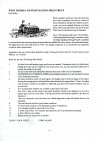 |
| ImageID: | MIS_1994_063 | | Title: | Mistral. Journal of the Mersea Island Society. January 1994. Page 31.
West Mersea Oyster Packing Shed Trust, by Don Butlin. | | Date: | January 1994 | | Source: | Mersea Museum |
| |